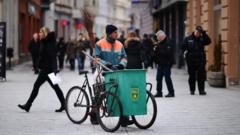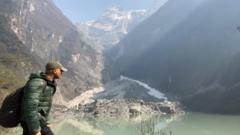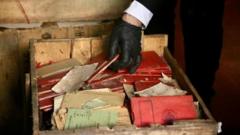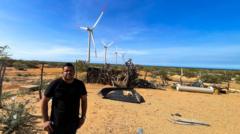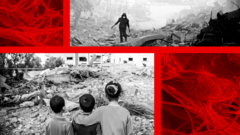A canal in Buenos Aires turned red, raising concerns about possible toxic waste disposal from local industries. The Environment Ministry is investigating the cause, as residents report previous color changes and health concerns related to the waterway.
Mysterious Red Canal in Buenos Aires Raises Environmental Concerns
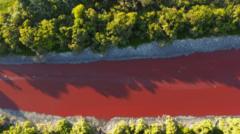
Mysterious Red Canal in Buenos Aires Raises Environmental Concerns
Brightly colored water in a suburban canal has sparked alarm among Buenos Aires residents, prompting investigations into potential industrial pollution.
A canal on the outskirts of Buenos Aires shocked residents when it displayed a vivid red hue on Thursday, drawing significant attention and concern. Aerial images revealed the striking color of the Sarandí canal as its waters flowed into the Rio de la Plata, a major waterway adjacent to an ecological reserve, raising alarm bells among locals.
Preliminary reports suggest the unusual coloration might be attributed to dumping by nearby textile factories or chemical waste from industrial activities prevalent in the area. As part of a response, the national Environment Ministry has initiated the collection of water samples from the canal to investigate the underlying causes of this alarming transition.
Local residents voiced their concerns, highlighting longstanding issues of waste disposal within the waterway. One resident, Silvia, recounted experiences of not just the current red coloring but also of previous instances where the water turned yellow and emitted an unpleasant acidic odor. She noted, “I live a block from the stream. Today, it has no smell. There are not many factories in the area, although there are warehouses.”
Another local, Maria Ducomls, added to the distress, recalling a history of varied colors in the water—including bluish, green, and lilac—with oily residues floating atop. These sentiments echo a broader unease about the environmental practices of industries situated around the canal, particularly in a region known for leather processing and textile production.
As the situation develops, the local community remains vigilant, advocating for stricter regulation and oversight of industrial waste disposal while anxiously awaiting findings from environmental tests that may shed light on the unusual coloration. This incident underscores the ongoing tension between industrial activity and environmental preservation within urban settings.









